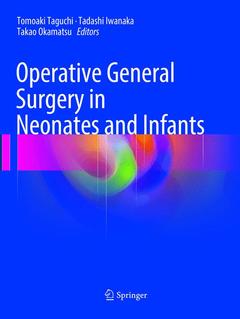Description
Operative General Surgery in Neonates and Infants, Softcover reprint of the original 1st ed. 2016
Coordinators: Taguchi Tomoaki, Iwanaka Tadashi, Okamatsu Takao
Language: English
Subjects for Operative General Surgery in Neonates and Infants:
Publication date: 05-2018
Support: Print on demand
Publication date: 07-2016
Support: Print on demand
Description
/li>Contents
/li>Biography
/li>Comment
/li>
This book focuses on standard operative techniques for important diseases in pediatric surgery, especially in neonates and infants, while also offering a wealth of schematic drawings and photographs to help readers understand the surgical techniques. Because of the rarity of the diseases and shortage of advising doctors, operative techniques for neonatal and infant surgery are difficult to learn. In order to understand essential operative procedures, schematic drawings and suitable intraoperative photographs are called for. Operative General Surgery in Neonates and Infants was written by leading experts in pediatric surgery with extensive experience in their respective fields. The contents provide detailed practical advice on the surgical procedures and perioperative management in neonates and infants. This book is a valuable guide for trainees and a helpful refresher text for specialized pediatric surgeons and can also be used to explain operative procedures to parents.
Serves as a clearly structured surgical guide with many detailed illustrations for each disease
Includes the latest topics in operative procedures
Provides a quick and intelligible reference for pediatric surgeons and trainees alike
Includes supplementary material: sn.pub/extras
These books may interest you

Pediatric Surgery Digest 158.24 €



